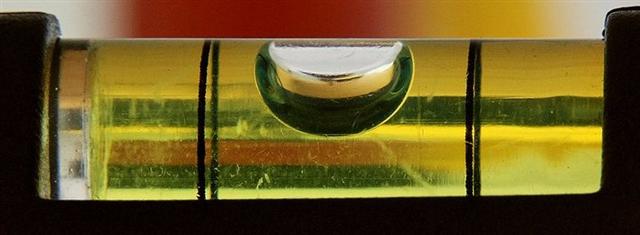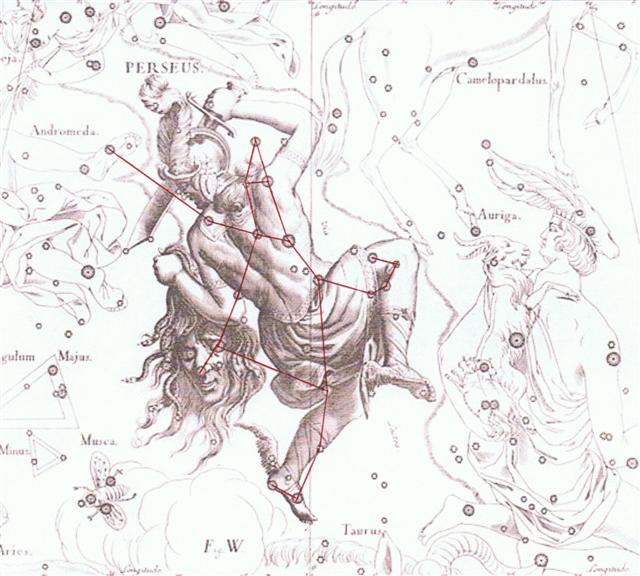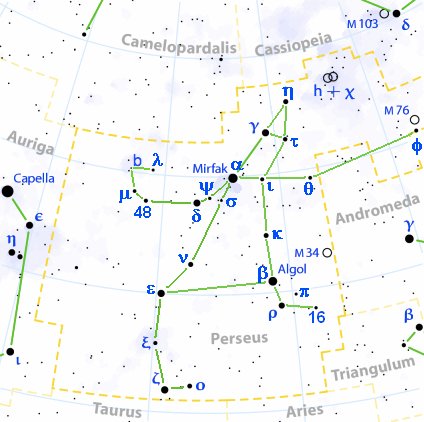GLYPHS
Aa6-66-5
In the rongorongo texts number
29(0) was essential, of central importance.
|
 |
*145↔ *290 / 2 |
 |
|
Ra4-12 (95 =
240 - 145) |
Ca9-12 (240) |
|
June 24 (320 - 145 = 175, *95 |
Nov 16 (*240, 320 = 137
+ 183) |
|
CANOPUS (*95 = *57 - *145 + *183) |
MENKHIB (*57 = *240 -
*183, 137) |

... When the old woman (somewhere in the
Mediterranean area) was asked what 29 meant she chuckled and
formed a round opening between her left forefinger and thumb
through which she then repeatedly
pushed her right forefinger
...
|
SEPT 10 |
11
(254, *174) |
12 |
13 |
14 (*354 / 2) |
SEPT 15 |
|
'Oct 17
(290) |
18 |
19 |
20 |
21 (660) |
'Oct 22 (295) |
 |
 |
 |
 |
 |
 |
|
Ca9-9 |
Ca9-10 |
Ca9-11 |
Ca9-12 (240) |
Ca9-13 |
Ca9-14 (242) |
| kotia |
kua rere |
ki te marama |
e moa |
haati kava |
e moa |
|
Nov 13 |
14 (254 + 64) |
15 |
16 (320) |
17 |
Nov 18 |
|
κ Librae (*237.2),
ι
Serpentis (*237.4), ψ² Lupi, ρ Oct. (*237.5), γ Cor. Borealis, η
Librae (*237.7), COR
SERPENTIS = α Serpentis (*237.9)
*237.4 -
*41.4 = *196.0 |
π Cor. Borealis, UNUK ELHAIA = λ
Serpentis
(*238.1), CHOW = β
Serpentis (*238.6) |
κ Serpentis (*239.3), δ
Cor. Borealis, Tiānrǔ (*239.5), χ Lupi, (*239.6), ω Serpentis (*239.7),
BA =
ε Serpentis, χ Herculis (*239.8). κ Cor. Borealis, ρ Serpentis (*239.9) |
λ Librae (*240.0), β Tr.
Austr. (*240.3), κ Tr. Austr. (*240.4), ρ Scorpii (*240.8)
*240.4 -
*41.4 = *199.0 |
Iklīl al Jabhah-15 (Crown of the
Forehead) /
Anuradha-17 (Following
Rādhā) /
Room-4 (Hare)
ξ Lupi, λ Cor.
Bor. (*241.1), ZHENG = γ Serpentis,
θ Librae (*241.2),
VRISCHIKA = π Scorpii
(*241.3), ε Cor. Borealis (*241.5), DSCHUBBA
= δ Scorpii
(*241.7), η Lupi (*241.9) |
υ Herculis (*242.3),
ρ
Cor. Borealis (*242.4), ι Cor. Borealis (*242.5), θ Draconis (*242.6),
ξ Scorpii (*242.7)
*242.4 -
*41.4 = *201.0
SCHEDIR
|
|
... In other words, the ancient Druidic religion
based on the oak-cult will be swept away by
Christianity and the door - the god Llyr - will
languish forgotten in the
Castle of Arianrhod,
the Corona Borealis. This helps us to
understand the relationship at Rome of Janus and
the White Goddess Cardea who is ... the Goddess
of Hinges who came to Rome from Alba Longa. She
was the hinge on which the year swung - the
ancient Latin, not the Etruscan year - and her
importance as such is recorded in the Latin
adjective cardinalis - as we say in
English 'of cardinal importance - which was also
applied to the four main winds; for winds were
considered as under the sole direction of the
Great Goddess until Classical times ......
... The Mayan 20-day skeleton
tree month Kankin was beginning with day 261 (=
9 * 29) and ending with day 280.
261 - 20 = 241 and
therefore we might guess the previous 'red meat'
month (Mac) was beginning not with day 241 but
with day 242 because that was the position of
Vathorz Posterior. Here the Tree was still
living and in good shape - not a skeleton but
still with meat on
...
... And
therefore we can guess that the
Phaistos Disc
carries 123 + 118
glyphs because of the difference 123 - 118 = 5
(= 241 - 236)
... |
|
Nakshatra
Full Moon: |
|
δ Persei (*54.7) |
Al Thurayya-27 (Many
Little
Ones) /
Krittikā-3 (the nurses
of Kārttikeya) /
Hairy Head-18 (Cockerel) |
MENKHIB (Next to the
Pleiades) = ζ Persei
(*57.6)
PORRIMA
|
ε Persei (*58.5), ξ Persei (*58.8), ZAURAK
(Boat) = γ
Eridani (*58.9) |
λ Tauri (*59.3), ν Tauri (*59.9) |
|
TAU-ONO
(6 Stones) |
Temennu-3 (Foundation Stone) |
|
ATIKS = ο Persei, RANA
(Frog) =
δ Eridani (*55.1),
CELAENO (16 Tauri),
ELECTRA (17), TAYGETA (19),
ν
Persei (*55.3),
MAIA (20), ASTEROPE (21), MEROPE (23)
(*55.6) |
ALCYONE
(*56.1),
PLEIONE
(28 Tauri), ATLAS
(27) (*56.3) |
|
Messier 45 (M45) |
|
May 14 |
15 (365 + 135) |
16 (136) |
(320 - 183) |
18 |
May 19 |
|
MARCH 11 |
12 (436, 71) |
13 (136 - 64) |
3-14 (73) |
15 (74) |
MARCH 16 |
|
... The Mahabharata insists on six as the number
of the Pleiades as well as of the mothers of Skanda
and gives a very broad and wild description of the birth and the
installation of Kartikeya 'by the assembled gods ... as
their generalissimo', which is shattering, somehow, driving home
how little one understands as yet. The least which can be said,
assuredly: Mars was 'installed' during a more or less close
conjunction of all planets; in Mbh. 9.45 (p. 133) it is stressed
that the powerful gods assembled 'all poured water upon
Skanda, even as the gods had poured water on the head of
Varuna, the lord of waters, for investing him with
dominion'. And this 'investiture' took place at the beginning of
the Krita Yuga, the Golden Age
... |
... The star that Ptolemy called ‘the
bright one in the Gorgon head’ is Beta Persei, named Algol
from the Arabic ra’s al-ghul
meaning ‘the demon’s head’. (As an aside,
al-ghul is
also the origin of our word alcohol - quite literally ‘the
demon drink’.) Algol is the type of star known as an
eclipsing binary, consisting of two close stars that orbit
each other, in this case every
2.9 days ...
|
1-23 |
24, 46-74 |
25-45 |
|
23 |
29 |
21 |
...
Algol, the
Demon, the Demon Star,
and the Blinking Demon,
from the Arabians' Rā's al Ghūl,
the Demon's Head, is said to have
been thus called from its rapid and
wonderful variations; but I find no
evidence of this, and that people
probably took the title from Ptolemy.
Al Ghūl literally
signifies a Mischief-maker, and the
name still appears in the Ghoul of
the Arabian Nights and
of our day. It degenerated into the
Alove often used some
centuries ago for this star ... With astronomical
writers of three centuries ago Algol
was Caput Larvae, the
Spectre's Head. Hipparchos and Pliny
made a separate constellation of the
Gorgon stars as the Head of
Medusa, this descending almost
to our own day, although always
connected with Perseus. The Hebrews knew
Algol as Rōsh ha Sātān,
Satan's Head, Chilmead's Rosch
hassatan, the Divels head; but
also as Lilith, Adam's
legendary first wife, the nocturnal
vampyre from the lower world that
reappeared in the demonology of the
Middle Ages as the witch Lilis, one
of the characters in Goethe's
Walpurgis Nacht ...
|
AUG 30 (242) |
31 (*163) |
SEPT 1 (308
- 64) |
2 (245,
*165) |
3 |
|
'Oct 6 |
7 (280) |
8 (308 - 27) |
9 (*202) |
10 |
 |
 |
 |
 |
 |
|
Ca8-27 |
Ca8-28 (227 → π) |
Ca8-29 |
Ca9-1 |
Ca9-2 (237 - 7) |
| tupu te
ure o te henua |
erua kiore |
Te marama erua |
|
Nov 2 |
3 |
4 (308 = 125 + 183) |
5 |
6 (317 - 7) |
|
KE KWAN
(Cavalry Officer) = β Lupi (*226.3), KE KWAN = κ
Centauri (*226.4), ZUBEN ELAKRIBI
(Claw of the Scorpion) = δ Librae (*226.8), π¹ Oct. (*226.9)
*226.4 -
*41.4 = *185.0 = *2.0 + *183.0 |
ω Bootis
(*227.2), NEKKAR (Herdsman) = β Bootis (*227.3),
σ Librae (*227.5), π² Oct. (*227.7),
NADLAT (Mean Little Ones) = ψ Bootis (*227.8), π Lupi (*227.9) |
15h (*228.3)
ZUBEN HAKRABIM (Claw of the Scorpion) = ν Librae (*228.3), λ Lupi
(*228.9) |
ω Oct.
(*229.3), ι Librae (*229.6), κ Lupi (*229.7),
ζ Lupi (*229.8) |
Al
Zubānā-14b (Claws)
χ
Bootis (*230.3), PRINCEPS = δ Bootis (*230.6),
ZUBEN ELSCHEMALI
(Northern Claw) = β Librae (*230.8) |
 |
|
Nakshatra
Full Moon: |
|
ρ
Arietis (*43.0), GORGONEA SECUNDA
= π Persei (*43.5), ACAMAR
(End of the River) = θ
Eridani (*43.6), ε Arietis (*43.7),
λ Ceti (*43.9)
DENEBOLA
|
MENKAR (The
Nose) = α
Ceti (*44.7) |
3h (*45.7)
GORGONEA TERTIA = ρ Persei (*45.1),
ALGOL (The Demon) = β Persei (*45.9) |
ι Persei (*46.1),
MISAM (Next to the Pleiades) = κ Persei (*46.2),
GORGONEA QUARTA) = ω Persei (*46.7),
BOTEIN (Pair of Bellies) = δ Arietis (*46.9) |
ζ Arietis
(*47.7) |
|
May 3 |
4 (60 + 64 = 124) |
5 (125 =
5 * 5 * 5) |
6 |
7 (127 = 63
+ 64) |
|
"March 23
(82) |
24 (124 - 41 = 83) |
(84,
Julian equinox) |
26 (85, *5) |
27 (*6) |
|
242 - 183 =
59 |
MARCH 1 (60) |
2 |
3 |
4 (63 = 70 - 7) |

 |
29 was the dark night of the Moon.
... What is this cry which our primitive
islanders share with the animals? Look at its elements, all
full-throated. First we have a, the sound of mouth open,
fauces open, lungs full of air. As air expires the sound recedes
in the mouth towards the palate and we find the u. Last
comes the conscious finish of the utterance, the muscles begin
to retract, the sound-making point is forced forward and the
sound is e. If the man had but a few more cubic
centimeters of lung capacity he could attain cow volumne for his
cry, or interjection, since it amounts to the same thing.
Churchill 2. When the new moon appeared women assembled and
bewailed those who had died since the last one, uttering the
following lament: 'Alas! O moon! Thou has returned to life, but
our departed beloved ones have not.
Thou has bathed in the waiora a
Tane, and had thy life renewed, but there is no fount to
restore life to our departed ones. Alas ...
This idea of a dark generative place surely would have been
applied to other cycles than the synodic cycle of the Moon:
A
flood of fresh water streams resulted from the hot rays of the
returning Sun, and the season was named Spring.
... He was moreover confronted with
identifications which no European, that is, no average rational
European, could admit. He felt himself humiliated, though not
disagreeably so, at finding that his informant regarded fire and
water as complementary, and not as opposites. The
rays of light and heat draw the water up, and also cause it to
descend again in the form of rain. That is all to the good.
The movement created by this coming and going is a good thing.
By means of the rays the Nummo draws out, and gives back the
life-force. This movement indeed makes life. The old man
realized that he was now at a critical point. If the Nazarene
did not understand this business of coming and going, he would
not understand anything else. He wanted to say that what made
life was not so much force as the
movement of forces. He reverted to the idea of a universal
shuttle service. 'The rays drink up the little waters of the
earth, the shallow pools, making them rise, and then descend
again in rain.' Then, leaving aside the question of water, he
summed up his argument: 'To draw up and then return what one had
drawn - that is the life of the world' ...
This fundamental
change was evidently indicated by the rainy Pleiades. They would arrive 5
days after Algenib Persei (α) - the right side (in front,
ahead) of his torso - which was
illuminated we can see above in the illustration of Hevelius.
|
SEPT 4 |
5 (285 - 37) |
6 (249) |
7 (314 - 64) |
8 |
SEPT 9 |
|
'Oct 11 |
12 (285) |
13 (366 - 80) |
14 (314 - 27) |
15 |
'Oct 16 |
 |
 |
 |
 |
 |
 |
|
Ca9-3 |
Ca9-4 (8 * 29) |
Ca9-5
→ 95 |
Ca9-6 |
Ca9-7 |
Ca9-8 (236) |
| koia kua oho |
ki te vai |
kua moe |
ku hakaraoa |
e rima no ona |
ku tupu te poporo |
|
Nov 7 |
8 |
9 |
10 (314) |
11 |
12 |
|
μ Lupi, γ Tr. Austr. (*231.3), ο
Librae (*231.8) |
ο Cor. Borealis
(*232.0), δ Lupi (*232.1), φ¹, ν² Lupi (*232.2), ν¹ Lupi
(*232.3), ε Lupi (*232.4), φ² Lupi (*232.5),
PHERKAD (The Dim
One of the Two Calves) = γ Ursae Min.
(*232.6), ε Librae (*232.7), η Cor. Borealis (*232.8), υ Lupi
(*232.9)
*232.4 -
*41.4 = *191.0 |
ALKALUROPS (The
Herdsman's Lance) = μ
Bootis (*233.1),
ED ASICH (Male Hyena) =
ι Draconis ('233.2) |
NUSAKAN (Pauper's Bowl)
= β Cor. Bor.
(*234.0), κ¹ Apodis (*234.3), ν Bootis
(*234.7), ζ Librae (*234.9) |
θ Cor. Borealis (*235.3), γ Lupi
(*235.6), GEMMA = α Cor. Bor., ZUBEN ELAKRAB = γ
Librae, QIN = δ Serpentis, ε Tr. Austr. (*235.7), μ Cor.
Borealis (*235.8), υ Librae (*235.9)
SIRRAH
|
φ Bootis (*236.2), ω Lupi, τ
Librae (*236.3), ψ¹ Lupi (*236.7), ζ Cor. Borealis (*236.9) |
|
Nakshatra
Full Moon: |
|
ZIBAL (Young
Ostriches) = ζ Eridani (*48.0), κ Ceti (*48.9) |
τ Arietis (*49.7) |
ALGENIB PERSEI = α
Persei (50.0), ο Tauri (50.2), ξ Tauri (50.8)
GIENAH
|
σ Persei (*51.6) |
no star listed (*52) |
ψ Persei (*53.1)
ACRUX
|
|
May 8 |
9 |
10 (130) |
11
(366 + 131) |
12 (498) |
13 (236 + 263) |
|
"March 28 |
29 |
30 |
31 (90) |
"April 1 |
2 |
|
MARCH 5 (64) |
6 |
7 (130 - 64) |
8 |
9 |
10 |
And in Manuscript E page number 29 should be consulted:
... They all sat down and thought. They had an idea, and Ira
spoke, 'Hey, you! [he ro korua] Bring [ka too]
the round stones (from the shore) and pile them into six [ono]
heaps of stone!' One of the youths [te tahi ngaio] said
to Ira, 'Why [ka aha] do we want to do that?' Ira
replied, 'So that we can all ask the stones to do something.'
They took (the material) for the stone heaps (pipi horeko)
and piled up six heaps of stones at the outer edge of the cave [te
ana]. Then they all said to the stone heaps, 'Whenever he
calls, whenever he calls for us [kia matou], let your
voices rush (to him) instead of the six (of us - i.e., the six
stone heaps are supposed to be substitutions for the youths)'.
They all drew back to profit (from the deception) (? ki honui)
and listened [he hakarongo].
A
short while later, Kuukuu called [he ui mai era]. As soon
as he had asked, 'Where are you?' the voices [te reo] of
the stone heaps [te Pipi horeko] replied, 'Here we are!'
All (the youths) said [he ki anake], 'Hey you! That was
well done!' [E:29]
Thus there should be a close connection between number 29 and
the '6 stones heaps' (Tau-ono) in the Pleiades.
 |
 |
*5 |
 |
 |
|
hua poporo |
ku tupu te poporo |
haati kava |
kava |
|
236 |
241 |

|


















